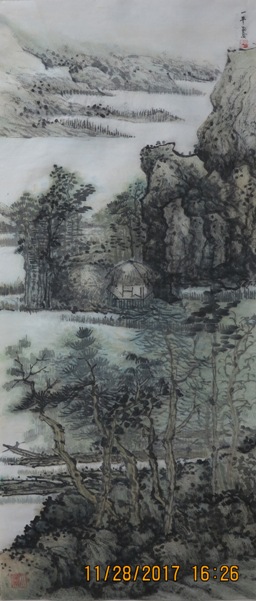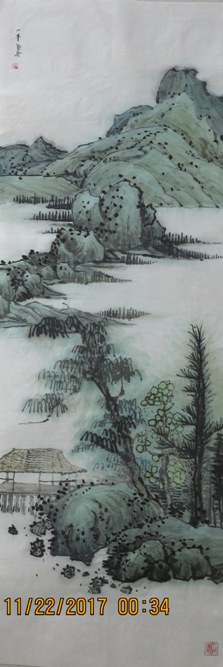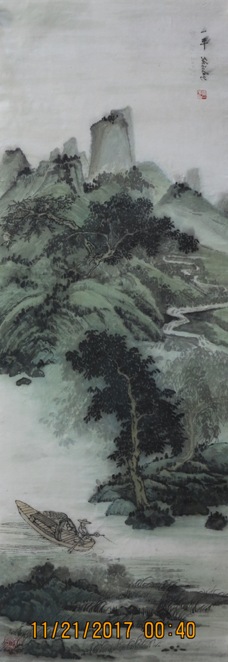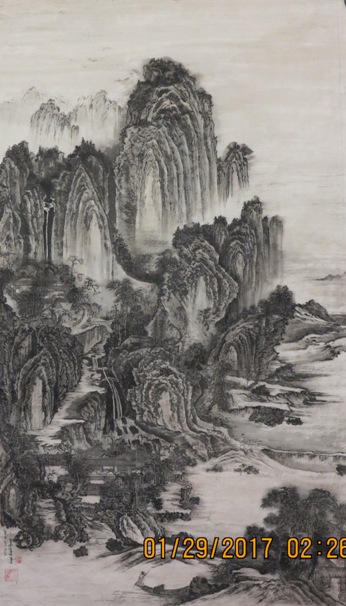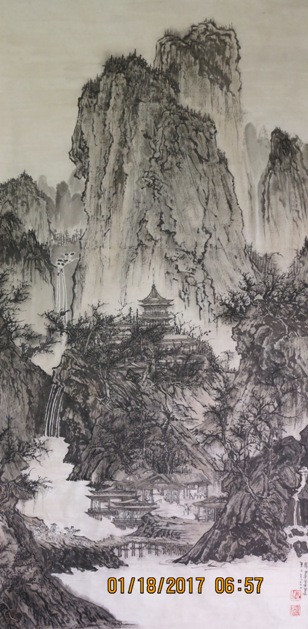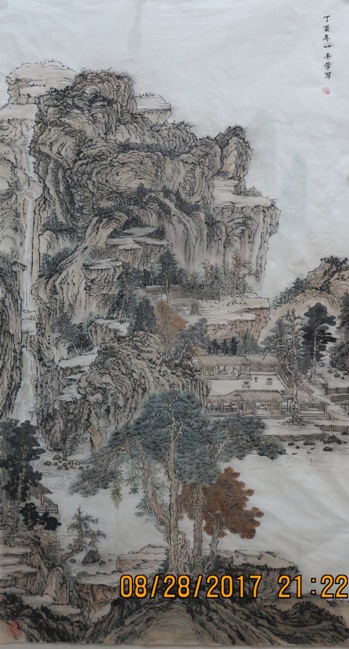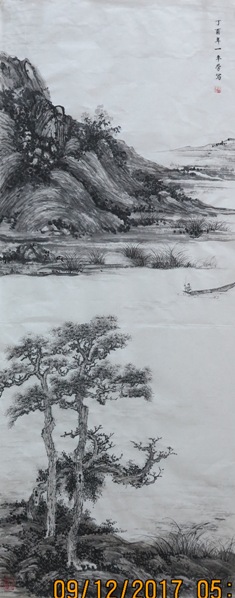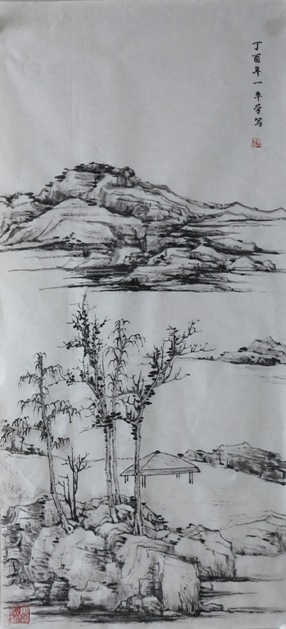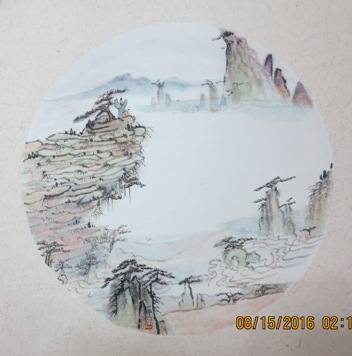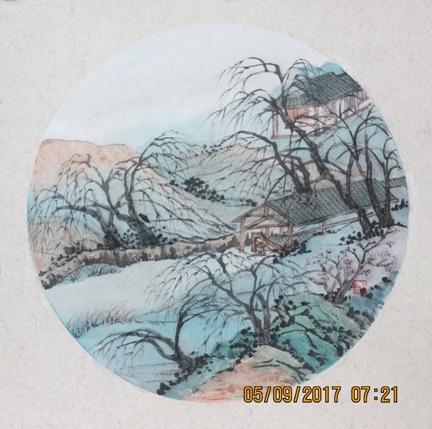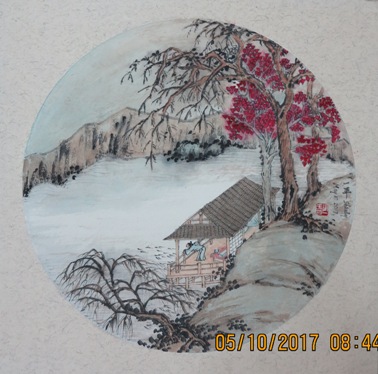
Xie, means "write"; Yi means "meaning, idea". Xieyi means to express (but with the style of writing as calligraphy, write out ) the idea or thoughts in an artist’s heart or mind, instead of something it can be seen with their eyes only. So, to express the thoughts or feelings of human being through painting, and to express the spirit of the nature objects is the core of a Chinese Xieyi Painting.
A simple and summary style, focusing on the spirit of objects to express an artist's feelings directly and freely is the basic character of Chinese Xieyi painting.
Since the Tang Dynasty (618-907) and in Song Dynasty (960-1127) and Yuan Dynasty (1279 - 1368), many liberators, scholars and officers joined the Xieyi Painting, pushing it the mainstream of Chinese painting.
In the history of Chinese art, many great Xieyi artists were also great literatures, poets or thinkers. They had good education and they were very intelligent, and they had creative minds and high art skills. With wide chests and rich thoughts, they set out to paint something simple but interesting, with free and quick strokes, to stress the spirit of the objects they painted, while not paying too more attention to the shapes of the objects.
Chinese Xieyi usually is painted on special paper that is permeable, called Sheng Xuan. The permeability of the paper can help artists to express their thoughts and feelings freely.
Chinese Xieyi can be divided into Small Xieyi and Big Xieyi. The difference of them is in the degree of freedom. The latter is much freer.
Most of the paintings that I painted for the poems in comprehensive art part are Chinese Xiyi Painting. Some of them are Mixed Gongbi and Xieyi.
Now I would like to share some of my Chinese Xieyi Paintings in Chinese National Academy of Arts. I will be very happy to hear your suggestions and advice.
Shirley Yiping Zhang
Nov 14, 2016
shirley@ebridge.cn
www.ebridge.cn
-
Sequence:
Time Content Love, Kinship and Friendship
关雎 — Singing Ospreys
七步诗 — The Quatrain of Seven Steps
寄扬州韩绰判官 — Send to the Official Han Chuo in Yang Zhou
夜雨寄北 —Send a Poem Letter to Someone in the North on a Rainy Night
Landscape
敕勒歌 — Chi Le Song
一望二三里 — Have A Look Over, Two, Three Miles
柏林寺南望 — Look Over the South From the Bailin Temple
江雪 — Fishing on a Snowy River
Philosophy
赋新月 — Ode to the New Moon
Travel and Farewell
赠汪伦 — Present the Poem to Wang Lun
静夜思 — Missing my Hometown in the Peaceful Night
绝句(江碧鸟逾白) — On the Blue River, Birds Seem More White
Song of the Spring
晚春 — Late Spring
Encouragement
庭竹 — The Bamboo in the Courtyard
梅花 — Plum Blossoms
Appendix
My Endless Gratitude -Feb,2017 in the USA
The Appendix ( Nov 16, 2017 in China) of My Endless Gratitude -Feb,2017 in the USA

My Traditional Chinese Xieyi Paintings
My Traditional Chinese Xieyi Paintings
Chinese Xieyi Painting is also named Freehand Brushwork and is characterized by vivid expression and bold outline.Xie, means "write"; Yi means "meaning, idea". Xieyi means to express (but with the style of writing as calligraphy, write out ) the idea or thoughts in an artist’s heart or mind, instead of something it can be seen with their eyes only. So, to express the thoughts or feelings of human being through painting, and to express the spirit of the nature objects is the core of a Chinese Xieyi Painting.
A simple and summary style, focusing on the spirit of objects to express an artist's feelings directly and freely is the basic character of Chinese Xieyi painting.
Since the Tang Dynasty (618-907) and in Song Dynasty (960-1127) and Yuan Dynasty (1279 - 1368), many liberators, scholars and officers joined the Xieyi Painting, pushing it the mainstream of Chinese painting.
In the history of Chinese art, many great Xieyi artists were also great literatures, poets or thinkers. They had good education and they were very intelligent, and they had creative minds and high art skills. With wide chests and rich thoughts, they set out to paint something simple but interesting, with free and quick strokes, to stress the spirit of the objects they painted, while not paying too more attention to the shapes of the objects.
Chinese Xieyi usually is painted on special paper that is permeable, called Sheng Xuan. The permeability of the paper can help artists to express their thoughts and feelings freely.
Chinese Xieyi can be divided into Small Xieyi and Big Xieyi. The difference of them is in the degree of freedom. The latter is much freer.
Most of the paintings that I painted for the poems in comprehensive art part are Chinese Xiyi Painting. Some of them are Mixed Gongbi and Xieyi.
Now I would like to share some of my Chinese Xieyi Paintings in Chinese National Academy of Arts. I will be very happy to hear your suggestions and advice.
Shirley Yiping Zhang
Nov 14, 2016
shirley@ebridge.cn
www.ebridge.cn



